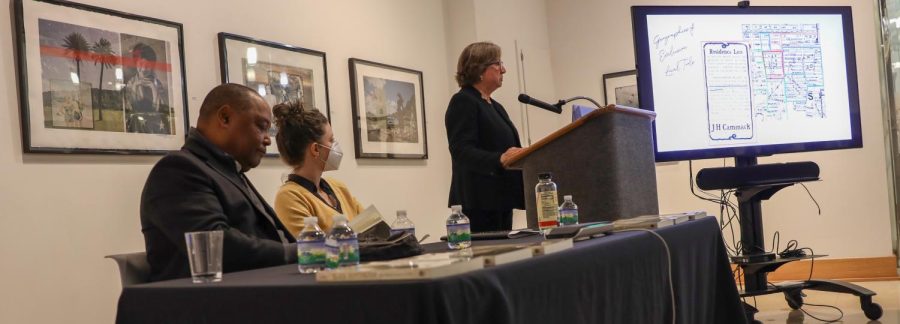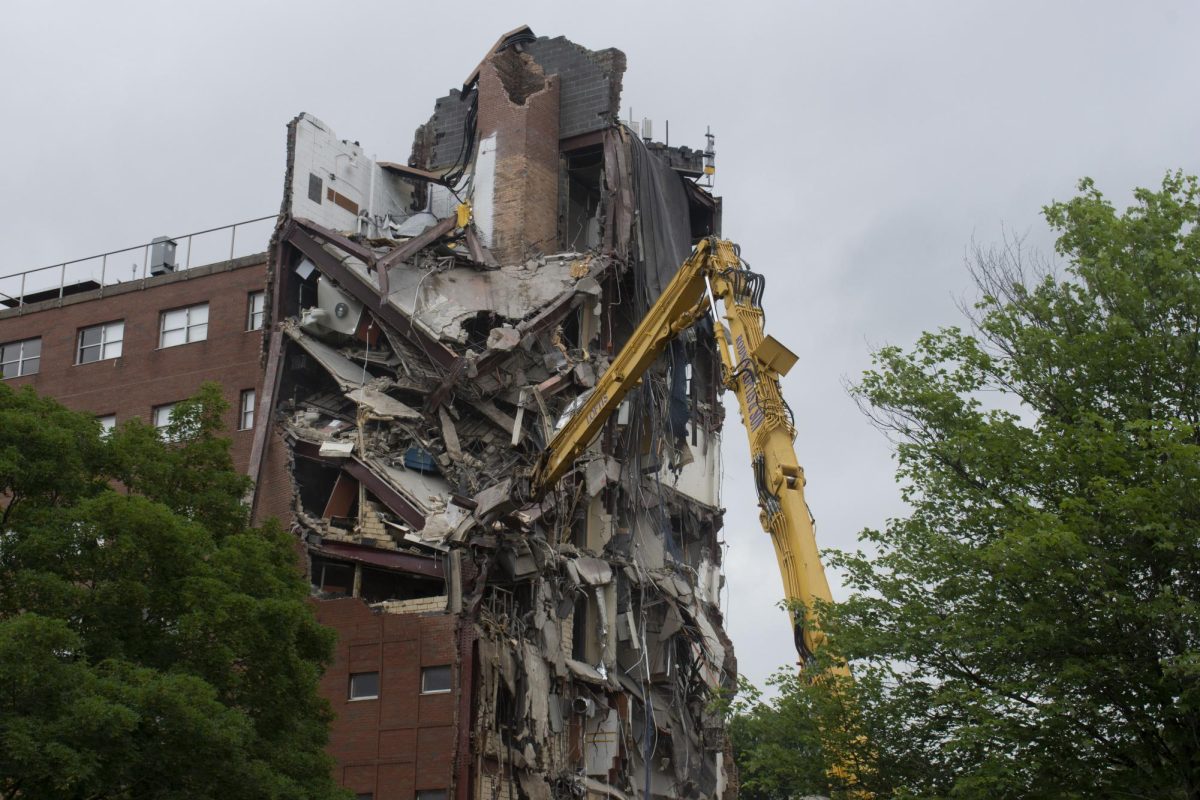Panel Discusses Housing Discrimination
October 25, 2022
Nearly a century has passed since “redlining” practices wove racism and discrimination into the fabric of American homeownership, yet many cities, like Huntington, still experience the effects and repercussions today, panelists told a Marshall audience last week.
“Redlining” most commonly refers to the act of the federal government denying African Americans loans for certain property because it was believed that property values would lower if African Americans moved into white neighborhoods.
After diving into research about Huntington’s Washington Place, a redlined subdivision set aside for black homeownership which aimed to keep Black people out of the surrounding white neighborhoods, panelist Professor Sarah McDermott turned her focus to the foundation and role of housing.
“It’s often where we create a sense of belonging and home, but it’s also a commodity in the U.S., and owning property is one of the main ways to build wealth,” McDermott said. “So, it’s been one of the main letters of inequality as well.”
Black Americans who were only a few generations removed from slavery had no capital or intergenerational wealth to begin their economic growth as they began working to contribute to the formation of the city, according to panelist Cicero M. Fain III.
“Increasingly they begin to realize that they cannot move the needle politically, so they begin to try to move it economically,” Fain said. “Property acquisition becomes the avenue that Black people can move up the economic ladder.”
These federal public housing policies were meant to create a lasting division in communities as denying Black people the ability to purchase homes directly correlated to them not being able to build equity causing a ripple effect still present today, according to Fain.
“Today, African American incomes, on average, are about 60% of average white incomes, but African American wealth is about 5% of white wealth,” Fain said. “Most middle-class families in this country gain their wealth from the equity they have in their homes. So, this enormous difference between a 60% income ratio and a 5% wealth ratio is almost entirely attributable to federal housing policy implemented through the 20th century.”
Factors such as today’s varying life expectancy within these formerly redlined communities drew the attention of geographer Dr. Jacqueline Housel, who discovered certain areas within the same city had higher levels of health issues and lower life expectancy.
“When we look at this geographically, our maps show that in these previously redlined areas there’s more high blood pressure, there’s diabetes and there’s more asthma and COPD,” Housel said.
Housel’s current maps of the city of Dayton, Ohio display parts of the area that were redlined have an average life expectancy of 61 years whereas the other parts of the city have an average life expectancy of 85 years, a 20-year discrepancy within miles of each other.












